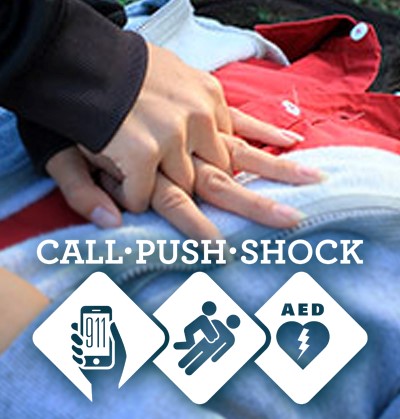
BRONX, NY-- The COVID-19 pandemic in New York City caused a surge in out-of-hospital cardiac arrests and deaths, according to a study co-authored by researchers at Albert Einstein College of Medicine, Montefiore Health System, and the Fire Department of the City of New York (FDNY).
The study, published online today in JAMA Cardiology, found a three-fold increase in out-of-hospital non-traumatic cardiac-arrest cases in March and April 2020 compared to the same period in 2019. On the worst day— April 6—cardiac arrests peaked at 305 cases, an increase of nearly 10-fold compared with the same day one year earlier. The mortality rate for cardiac-arrest cases also rose, from 75 percent in 2019 to more than 90 percent during the same period in 2020.
"Relatively few, if any, patients were tested to confirm the presence of COVID-19, so we couldn't distinguish between cardiac arrests attributable to COVID-19 and those that may have resulted from other health conditions," said study senior author David Prezant, M.D., professor of medicine at Einstein, a clinical pulmonologist at Montefiore, and the Chief Medical Officer at the FDNY. "We also can't rule out the possibility that some people may have died from delays in seeking or receiving treatment for non-COVID-19-related conditions. However, the dramatic increase in cardiac arrests compared to the same period in 2019, strongly indicates that the pandemic was directly or indirectly responsible for that surge in cardiac arrests and deaths."
The study used data from the New York City emergency medical services system. Run by the FDNY, it is the largest and busiest EMS system in the U.S., serving a population of more than 8.4 million people and responding to more than 1.5 million calls annually. Data was analyzed for patients 18 years or older with out-of-hospital cardiac arrest who received EMS resuscitation from March 1, 2020 (when the first case of COVID-19 was diagnosed in New York City) through April 25, 2020 (when EMS call volume had receded to pre-COVID-19 levels). For comparison, cardiac-arrest data was also analyzed for the same time period during 2019.
Between March 1 and April 25, 2020, 3,989 patients underwent EMS resuscitation attempts for out-of-hospital cardiac arrests—compared to 1,336 patients who were treated during that period in 2019.
Compared with cardiac arrests in 2019, cardiac arrests occurring during the pandemic were associated with several risk factors. On average, the 2020 patients were:
- Older (average age of 72 vs. 68 for the 2019 cardiac-arrest patients)
- Less likely to be white (20 percent white vs. 33 percent)
- More likely to have hypertension (54 percent vs. 46 percent)
- More likely to have diabetes (36 percent vs. 26 percent)
- More likely to have physical limitations (57 percent vs. 48 percent)
- More likely to have cardiac rhythms that don't respond to defibrillator shocks (92% vs. 81%)
- More likely to die (90% vs 75%)
Why might a respiratory disease like COVID-19 trigger heart problems? In addition to overwhelming pneumonia and acute respiratory failure, COVID-19 damages the lining of blood vessels, leading to blood clots that can trigger heart attacks even in people with no previous cardiopulmonary diseases.
"Our findings show that it's clearly important to intervene early in the course of COVID-19 infection, before often-fatal cardiac arrests occur," said Dr. Prezant. "They also underline the critical need, particularly during a pandemic, to provide better access to healthcare and outreach for vulnerable patients with chronic conditions. Early, targeted interventions for those at-risk individuals—regular telemedicine visits and home-based monitoring of vital signs including oxygen saturation levels, for example—might help to reduce out-of-hospital fatalities."
SOURCE: Albert Einstein College of Medicine
